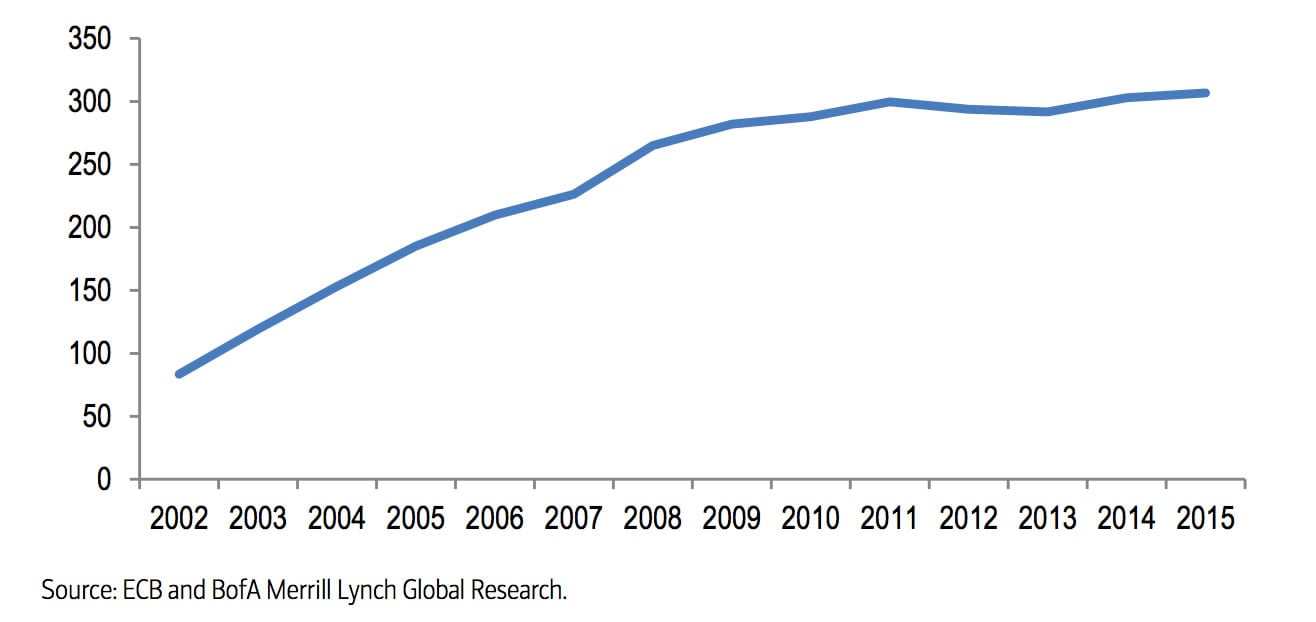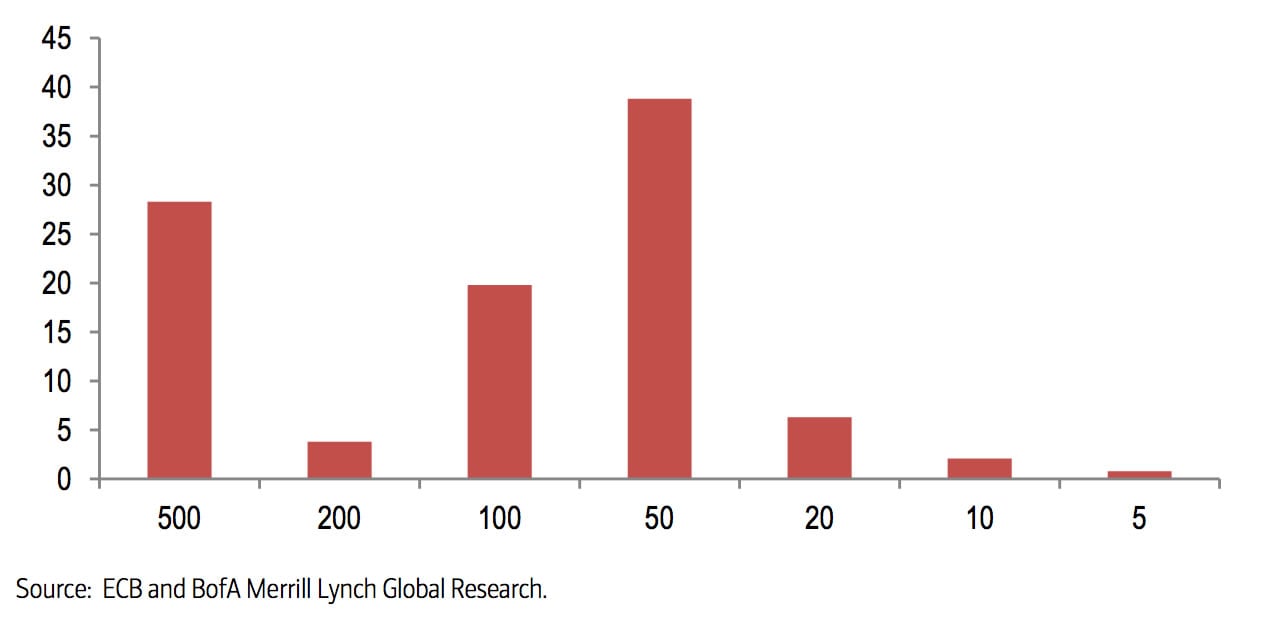Why Dropping the €500 Could Weaken the Euro Exchange Rate
“The €500 note represents 30% of total euros in circulation. Abolishing it would weaken the EUR, keeping all else constant.” - Bank of America Merrill Lynch Global Research.

The rapid rise in the euro exchange rate complex witnessed in February 2016 will be an unwelcome move at the European Central Bank (ECB) which is desperate to see the single currency stay as low as possible in order keep Eurozone product competitive on the international market place.
Softening the euro is no doubt one of the policy objectives at the ECB who have slashed interest rates and embarked on various forms of quantitative easing over the past few years.
But there is another route to a lower euro it is argued.
Drop the €500 note.
Why the ECB Get Rid of the €500 Note?
Back in 2013 Bank of America Merrill Lynch analyst Athanasios Vamvakidis suggested that scrapping the €500 bill, which is the second highest currency denomination in G10, would ensure demand for the euro as a store of value would further decline.
The arguments made by Vamvakidis are compelling:
“It will weaken the euro, supporting the economy. It will address concerns that the bill is primarily used to hide illegal income. More importantly, we propose a scheme in which the removal of the bill will be a tax on illegal income, allowing using the proceeds to address the periphery crisis.”
However, back then Mario Draghi, ECB President, pooh-poohed the idea saying:
"High-denomination euro banknotes fulfil an important role as a store of value and are a last resort for storing assets, both within the euro area and abroad. The issuance of euro banknotes follows the demand of the economic agents, both in terms of denomination and quantity. Therefore, the ECB does not plan to change the denominational structure of the euro banknotes".
The ECB has now changed its mind and is considering abolishing the €500 note.
In a recent interview, Executive Board member Benoit Coeure said that "the ECB is assessing the fate of the €500 euro banknote, as concerns about its use in money laundering and crime grow and its usefulness for large payments comes into question."
The Problem with the €500 Note
Although electronic payments should have made such large denominations redundant, the €500 bill remains popular:

ECB data shows the total value of €500 notes in circulation amounts to €306.8bn and has been rising. As a share of the value of total euros in circulation, the €500 note is the second-highest, after the €50 note

“The popularity of the €500 note, despite rarely being used for purchases—most merchants don’t accept it—raises questions about who is using it and why,” says Vamvakidis.
Coeure has now admitted that “competent authorities increasingly suspect that they are being used for illegal purposes, an argument that we can no longer ignore.”
The total value of Euros in circulation is higher than that of the USD as a share of GDP, which could partly reflect illegal activities and tax evasion suggests Vamvakidis.
Abandoning the Note Could Weaken the Euro / Dollar Exchange Rate
Many analysts we follow argue that the effectiveness of the Eurozone’s central bank in boosting the economy and weakening the euro is waning.
The Bank is simply finding cutting interest rates does not give the same ‘bang for your buck’ that it once did.
So, fresh measures are needed.
“Abolishing the €500 note would not necessarily weaken the Euro automatically, but we believe eventually it would. We have recently argued that the main driver of the strong Euro this year has been the risk-off market sentiment. However, we would expect that abolishing a note that represents almost 30% of the total Euros in circulation would be negative for the currency, keeping everything else constant,” says Vamvakidis.
The share of the €500 note in the total value of Euros in circulation has been falling since 2009 and this has coincided with a weakening Euro in real effective terms. “This is not evidence of causality, but we should not ignore it,” argues the Bank of America analyst.
If Bank of America are right they believe the Euro will weaken, primarily against the USD and the CHF.
“The USD is the most liquid currency and we would expect it to capture a large share of the drop in the demand for the Euro as a store of value. However, the CHF could also benefit, having the largest note denomination in G10 economies,” says Vamvakidis.
Indeed, the CHF1000 note is already very popular, representing more than 60% of the CHF notes in circulation, unless the SNB follows the example of the ECB and also abolishes the CHF1000 note.



